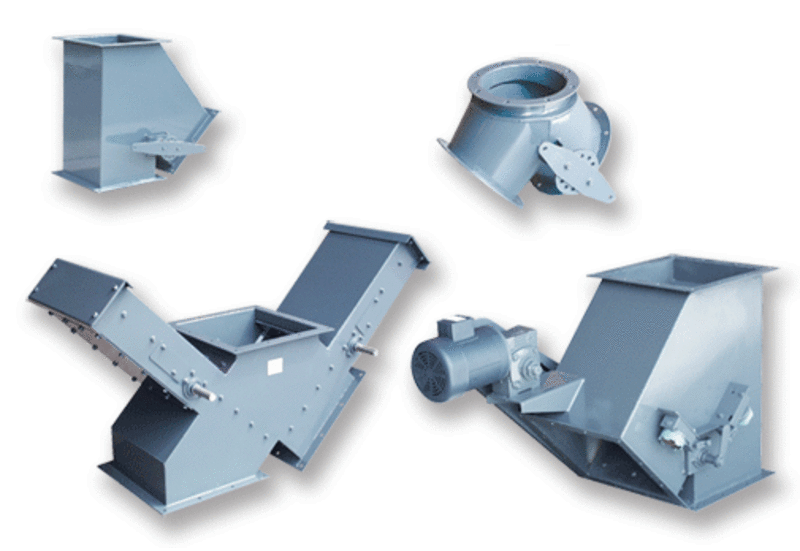Flop & Bucket Valve
Bucket valves, also known as basket valves or pan valves, are by far the most common type of valve used. This type of valve consists of a formed channel shaped diverter with an inlet shroud that feeds the material flow into the inside of the formed bucket. This inlet shroud does somewhat reduce the square inch area at the inlet but it is rare that anyone will select a larger valve size over the spouting size to compensate for this loss. Bucket valves provide excellent feel for a person operating that unit with cables from a remote source because of the over center toggle spring and the positive metal to metal stop. A bucket valve is subject to some leakage between the bucket and the housing when one of the discharge spouts get plugged or when there is enough positive air pressure coming back up a discharge spout. Caution must be used on a manually operated bucket type "K" valve that will be operated in the vertical position. If material does not enter the valve in a straight down flow it can cause the bucket to open slightly, allowing some leakage. This same problem can occur if the material falls vertically for quite a distance which will result in a heavy impact against the bucket.
Flop valves are often used in place of bucket valves under the following conditions: When a dusty material such as animal feed is flowing through the valve and may "leak" around the sides of a bucket valve from air pressure in the spout. When the discharge spouts from the valve are expected to be choked with material. When the valve has to be operated angled on its side. When a material such as flour is going to be used and the interior crevices of a bucket valve could allow infestation. Flop valves consist of two steel plates with 3/16 inch food grade urethane sandwiched between and then riveted with the urethane sticking out on the top and two sides. The bottom of this flop welds to the operating shaft or to a tube when a removable flow is desired. This urethane seals against the housing walls and does not require any internal keystock for proper sealing. The urethane seal's friction against the valve housing maintains the flop position, because of this and the limited throw angle of the shaft no toggle spring is used. A toggle spring is available if requested but the spring is not strong enough to actually pull the flop over to one side by itself. Sticky products can sometimes
build up on the interior sidewalls which can allow the urethane seal to leak. UHMW lining on the inside valve side or a UHMW seal in place of the urethane may prevent this. Neither urethane or UHMW should be used with products over 200 degree F. Custom flop valves can be made where the flop face is at 60 degrees. This requires a taller valve housing. Bucket valves are not available with a steeper face angle.
| Name | Type | Size |
|---|---|---|
Installation & Operation |
||
| Diverter Valve Installation | manual | 377 kb |

